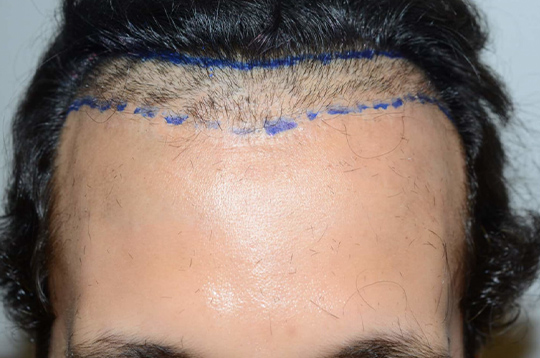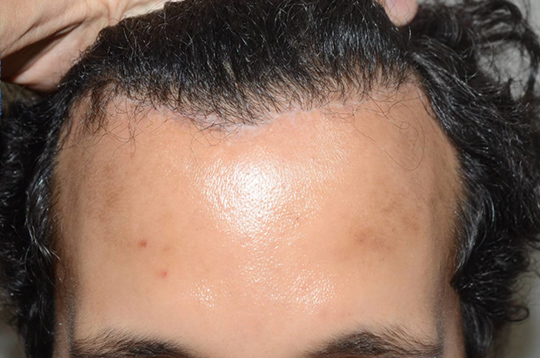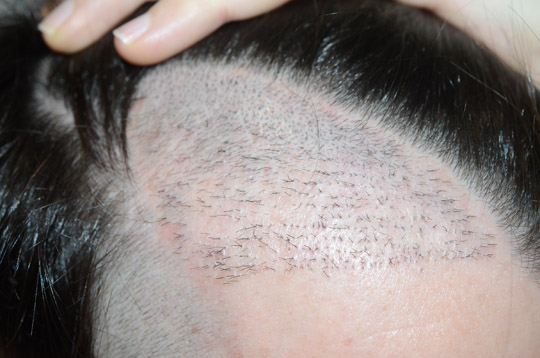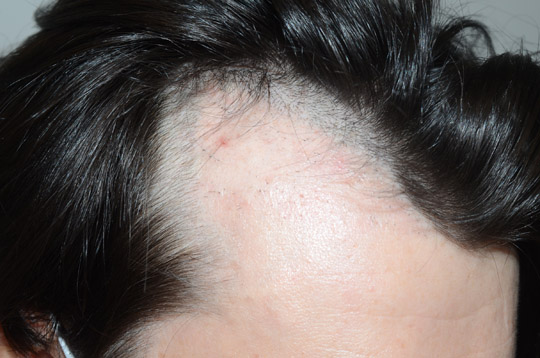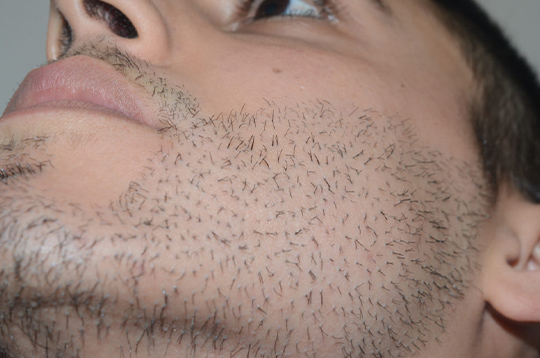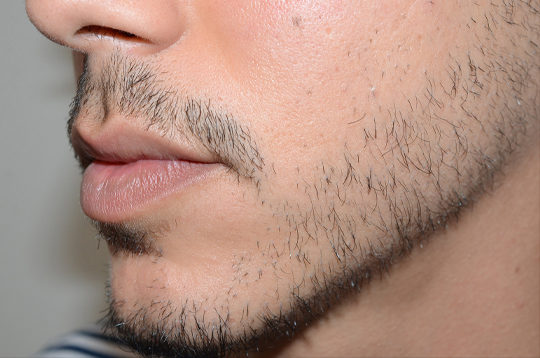At Foundation Aesthetic Hair Restoration, we specialize in hair transplant revision to correct poor outcomes from previous reparative hair procedures. Under the expert guidance of J. Epstein, MD, FACS, our team addresses issues such as unnatural graft placement, scarring, and insufficient density, delivering refined, natural hairlines that restore confidence and aesthetic harmony.
Hair Transplant Revision
Miami
ACTUAL PATIENT
Correct the results of
previous hair transplants
Reparative hair procedures become essential when prior transplants yield less-than-ideal results like cobblestoning, pitting, flat and low hairlines, unnatural graft positioning, insufficient density, or visible scarring. Issues from donor site scarring, whether from strip/FUT or overharvested FUE procedures, can leave visible marks that call for expert correction. At Foundation Aesthetic Hair Restoration, reparative solutions are carefully tailored to restore a natural, aesthetically pleasing appearance, helping patients regain their confidence.
Our reparative procedures involve various advanced techniques, such as additional hair grafting, FUE punch removal, plug punch reduction, and frontal hairline excision. Techniques like endoscopic ridge reduction and balloon tissue expansion are used for more extensive scarring. In some cases, fat transfer combined with growth factors is used to enhance scalp health before subsequent transplants. Every procedure is planned with an aesthetic eye, ensuring a seamless, natural result.
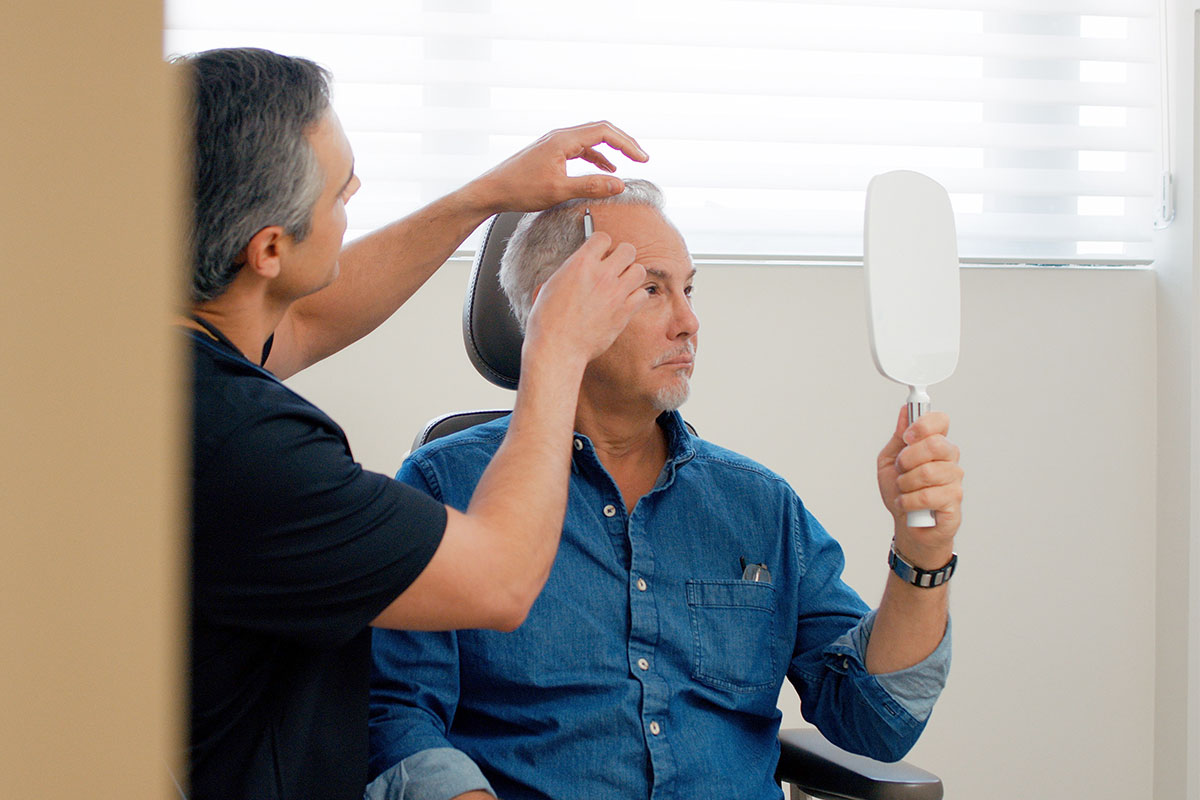
ACTUAL PATIENT
Possible reasons for reparative hair procedures
- Unnaturally placed grafts, especially along the hairline, containing two or more hairs per graft
- Insufficient hair density from previous transplants
- Improper direction of hair growth, resulting in a perpendicular rather than a forward angle
- Scarring at the donor site from prior strip/FUT or FUE procedures
- Skin scarring, such as cobblestoning or pitting, due to poor graft placement
- Unaesthetic hairline design, often too flat or too low
- Overharvesting in FUE procedures that lead to visible scarring
- Desire to remove prior grafts and return to a smooth, bald appearance
- Correction of large scars from burns or other trauma
- Poor outcomes from old plug or large graft techniques that prevent future hair growth
Benefits of hair transplant revision:
- Achieve a more natural, aesthetically refined hairline
- Correct unnatural graft placement, restoring facial harmony
- Enhance hair density for a fuller look
- Restore proper hair growth direction for seamless integration
- Minimize or eliminate visible scarring from previous procedures
- Address skin scarring issues like cobblestoning or pitting
- Customize hairline design to suit individual facial features with an artistic eye
- Utilize advanced techniques, such as fat transfer, to rejuvenate scalp health
- Provide options for patients seeking a smooth, bald appearance
- Increase confidence and satisfaction with natural-looking hair restoration results
Reparative hair procedures include
Additional hair grafting
Additional hair grafting involves transplanting new hair follicles to areas with insufficient density or poorly positioned grafts. This precise process typically uses follicular unit extraction (FUE) to harvest hair from the scalp or beard. New grafts are then meticulously implanted to improve density and correct growth direction, creating a seamless, natural appearance.
FUE punch removal
FUE punch removal allows for the selective extraction of undesirable grafts that were previously placed improperly. Using advanced FUE technology, each unwanted graft is carefully extracted, then dissected and re-implanted in a more aesthetic orientation or into areas of previous donor site scarring. This ensures virtually no scarring and enhances the overall appearance.
FUE plug punch reduction
FUE plug punch reduction refines large, unnatural grafts by reducing their size. Portions of the grafts are removed and re-implanted into better positions, improving the natural look of the hairline. This technique is especially effective for refining grafts that are too bulky or contain multiple hairs, ensuring a more polished result.
Going bald
For some patients, opting for a clean, bald look is the preferred solution. This involves removing all previously placed grafts, allowing the scalp to heal and smooth out naturally. The extracted hairs can be discarded or repurposed to conceal old donor site scars. This approach is ideal for those who want to move away from continuous hair restoration treatments.
Frontal hairline excision
Frontal hairline excision involves the precise removal of poorly placed hairlines and scarred skin, addressing up to one inch of tissue. The remaining healthy hairline is skillfully advanced and sutured, leaving a fine-line scar that blends naturally. This technique is often used to correct severe hairline issues, creating a more harmonious and aesthetically pleasing appearance.
Balloon tissue expansion
Balloon tissue expansion gradually stretches hair-bearing scalp skin. A balloon expander is placed under the scalp and slowly inflated over several weeks, generating extra scalp tissue that can replace large areas of scarring. This method is particularly effective for treating extensive scarring from burns or trauma, restoring smooth, natural contours.
Endoscopic ridge reduction
Endoscopic ridge reduction addresses thick scar tissue (ridging) caused by prior grafts. Using endoscopic techniques, Dr. J. Epstein excises the scar tissue, reducing fullness along the hairline. This minimally invasive approach results in virtually no scarring and a quick recovery, restoring the scalp’s smooth, natural appearance.
Repair of donor site scar
Repair of donor site scars focuses on making visible scars less noticeable. Techniques include plastic surgery methods to excise and close the scar or grafting FUE hairs into the scar to conceal it. Growth factors may also be injected to encourage regrowth in scar tissue, resulting in a smoother, more natural donor area
Fat transfer for scarred scalps
Fat transfer for scarred scalps rejuvenates the area by injecting the patient’s own fat, enriched with growth factors. This procedure, known as autologous fat transfer, enhances blood vessel growth, softens the scalp, and improves skin texture. After three months, the scalp is ready for a hair transplant, leading to higher hair regrowth rates in previously scarred areas.
Reparative hair procedures FAQs
How long is the recovery period for reparative hair procedures?
The recovery period depends on the specific procedure. Generally, most patients can expect minimal downtime after hair transplant revision. For example, healing after FUE punch removal typically takes around three days, while more complex procedures like frontal hairline excision might require a week of recovery. Patients can usually resume normal activities within a few days to a week.
Can I achieve a natural-looking hairline with reparative procedures?
Absolutely. Reparative hair procedures are meticulously designed to correct previous issues and create a natural, seamless hairline. Techniques such as additional hair grafting, FUE punch removal, and frontal hairline excision are tailored to restore a natural look, blending flawlessly with your existing hair.
Can beard hair be used in reparative procedures?
Yes, beard hair can play a crucial role in reparative procedures, especially when there is insufficient donor hair on the scalp. Beard hair is often utilized to increase graft counts and improve density in the transplanted area. This approach is particularly beneficial for patients with extensive scarring or those who have undergone multiple previous transplants.
Initiate your end-to-end hair restoration experience
Foundation Aesthetic Hair Restoration is the ultimate destination for personalized, expert hair transplant revision. We combine advanced medical techniques with an artistic eye to ensure natural, stunning results. Led by Dr. J. Epstein, our team excels in innovative procedures and reparative solutions, helping you achieve your hair restoration goals. Our dedication to patient care sets us apart—all patients maintain direct communication with our surgeons from the initial consultation to the final stages of recovery. Schedule your consultation today and take the first step toward a refined, confident appearance.
ACTUAL PATIENT
Contact Us Today
Start Your
Journey
Have questions? Reach out today
for answers and more information.

